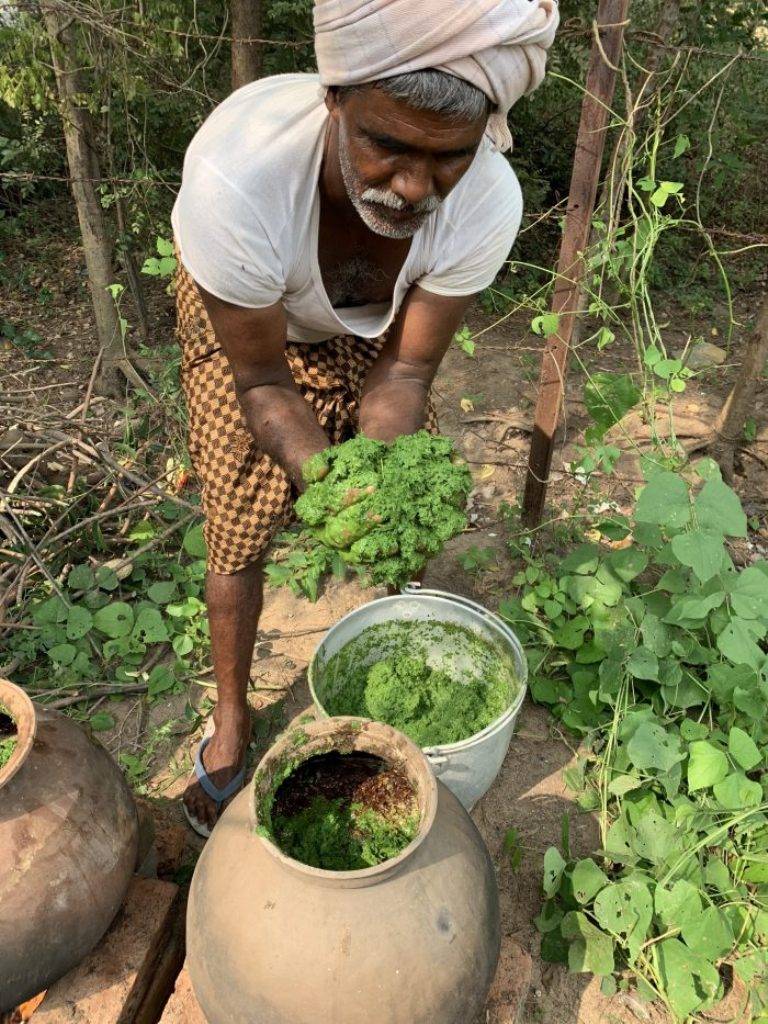
Agriculture is one of the basic needs to produce food. If we look at the whole ecosystem, then agriculture seems to be both cause and victim of water scarcity. According to Food and Agriculture Organization (FAO), excessive use of water has affected the sustainability of livelihoods dependent on agriculture and water.
Green Revolution had a remarkable impact on India’s Food Production, but it has also become the cause of land infertility, which in turn become the cause of excessive water consumption and also proved groundwater loss.
According to Central Water Commission, if we look at overall water consumption by our Country’s agriculture sector, 83% of available water resources are already consumed. And demand will grow more in future.
Zero Budget Natural Farming
There is a Global demand to shift conventional farming to sustainable farming systems, such as Zero Budget Natural Farming (ZBNF). And India also introduced ZBNF in its Union Budget 2019-20. This includes the use of ancient practices one again, which will reduce the farmer’s direct cost and instead of including modern chemical practices, increase of natural inputs. For the management of soil fertility, nutrition and pest management, it includes the use of cow dung manure and cow urine instead of chemical substances. And ZBNF technology requires less ploughing and irrigation, so it is also water efficient.
ZBNF technology involves mulching with residues of crop that promotes moisture retention in soil and increase humus. It also involves aeration of soil that in turn reduces water consumption.
Comparison study between ZBNF and Non-ZBNF Technology
In 2019, a group of researchers tried to quantify how many farmers are using this way and its benefits.
Researchers of Bengaluru based policy think tank Centre for Study of Science, Technology and Policy conducted a study in Andhra Pradesh to explore and compare ZBNF and Non- ZBNF practices in farming of paddy, maize, cotton, groundnut and chilli.
This comparison made was based on six parameters, i.e., water, electricity, energy consumption, greenhouse gas emissions, yield and revenue.

The study was conducted in Anantapuramu, Prakasam, Vizianagaram and West Godavari districts of Andhra Pradesh in Kharif season, with making sure about variation in farming techniques, agro-climatic zones, production and social aspects. And it found ZBNF maximum beneficial for paddy farming, with saving of 1,400 to 3,500 cubic metres of water per acre per paddy cropping period. And the study was published in February 2020.
And, instead of conventional method, that requires watering every five to six days; this was conducted by increasing the time interval of watering cycles or irrigation and changed it to every eight to ten days instead of five to six days. Water management was done by aeration practices; this involves periodic aeration of soil in between irrigation periods. And one more thing to be noted is that, water consumed in cultivation of paddy depended on the frequency and depth of irrigation.
Paddy farms which were using ZBNF technology were irrigated with only 2.54-5.7 centimetres deep water and those that were not using ZBNF technology were irrigated up to 12.7 centimetres deep water.
It was observed in the study that traditional irrigation, spread of nutrients was inconsistent with excess use of water, something that can affect crop productivity.
Even if study did not observe much effect on crop yield by using ZBNF and Non- ZBNF technology, but, multiple aeration and less water consumption benefitted in other way. In just a single crop season, electricity consumption of farms depending on groundwater reduced by 1,500 to 3,900 units of electricity per acre of land, and saved Rs. 6,000 to 16,000.
And one more thing was observed that, multiple aeration restrained microbial activity and reduced methane emissions by 88% in compare to that of conventional irrigation method. And in turn, that also reduced consumption of fossil fuels used for electricity generation and reduced emissions.
Water Saving in Paddy Farming and Other Benefits
If all of India’s paddy farming area, i.e., near to 44 million ha will be brought under ZBNF technology, we can save near to 400 billion cubic metre of water. And in addition to this, ZBNF can reduce challenges like groundwater loss and overuse of water resource. ZBNF can also reduce current drawing of groundwater by 50-60%.
One more issue can be resolved that is, upstream farmers consume more water leaving downstream farmers with insufficient volume left.
In a long run, ZBNF can benefit farmers and also make a huge impact on India’s agricultural practices. And can also reduce water consumption and overall can save water, but nothing can happen in a day, so more investigation is required in this field and then this technology can be applied across the country.
References
https://cstep.in/publications-details.php?id=932















